by Liz Gonzales
It’d be fair to say that nearly every room in your house would benefit from a well-designed and watertight floor – and your kitchen is no exception.
Indeed, as we said, a beautiful design, waterproofness, and let’s add durability as well, is all you need from a floor in order for it to serve you successfully for years to come. Now, as far as kitchen floors, in particular, are concerned, arguably the most important parameter to keep in mind would actually be the waterproofness.
Remember, your kitchen is a place where you’ll be cooking food, dismembering fish, squeezing vegetables into a pulp, as well as hacking at large chunks of steamed bone with a hatchet. What all of these signify, in case you haven’t caught it, is gallons upon gallons of dripping water, plus a fair share of steam.
So, when it comes to kitchen flooring, you need to look for durability and waterproofness as the main properties. Well, fair enough, but how do you find a material with these aforementioned features if you’re working with a smaller budget?
Contents
In this article, we’re going to offer some ideas in this particular department. To help you out find your perfect material, we’ve found some low-cost flooring options that could work quite well in a kitchen environment.
Right then folks, without further ado, here’s the deal.

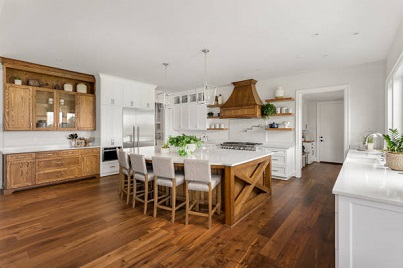
Representing a rather attractive type of flooring for folks who like the natural feeling, as well as the visuals of wood, hardwood floors are perhaps one of the best solutions for kitchens. Even though hardwood, as a rule, doesn’t fare well in conditions where there’s a lot of moisture, a lit bit of tweaking here and there can resolve this as soon as you can say ‘Jack Robinson’.
For example, if you choose a hardwood option made out of solid wood (as opposed to engineered wood), all you need to do is simply apply an additional protective layer resistant to water, make sure it’s spread everywhere evenly, and Bob’s your uncle!
Also, both engineered wood and solid wooden planks can be found in several price ranges, so even if you’re working with a particularly small budget, there’s a good chance you’ll figure something out.
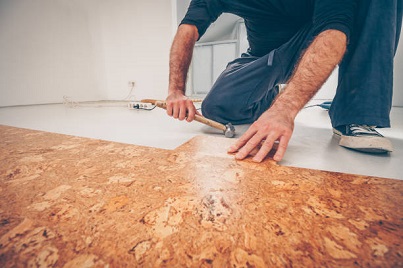
Thanks to its softness, ability to withstand moderate levels of moisture and a relatively low price, cork is a material that’s fared quite well with many a proud owner of a kitchen floor made out of this special material.
As you may already know, cork is actually made out of the bark of the cork tree, which grows back every couple of years. This means there’s literally an endless supply of cork, which makes this material practically a sustainable one for all intents and purposes.
There’s an important thing to keep in mind if you’re planning on choosing cork as the flooring material for your kitchen. When exposed to copious amounts of moisture and steam, cork can start deforming, which can cause the tiles to come apart and leave cracks and awkwardly-shaped bulges in your floor.
So, if your kitchen is particularly ‘rich’ with water, you may want to make your kitchen flooring out of some other material, instead of cork.
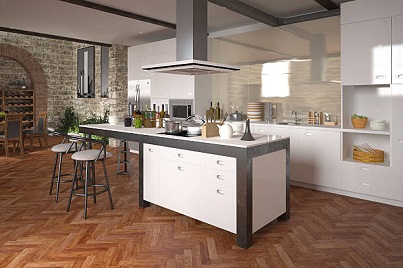
If you’ve ever been to a flat or some other buildings of older build, you’ve probably already seen your fair share of parquets. The idea behind a parquet is quite simple – you have a number of small wooden planks, you arrange them together so that they form the well-known pattern, et voila! – your floor is as ready as it will ever be.
Thanks to its ease of installation and low costs, parquet can be an excellent choice for people who are trying to renovate their homes for the very first time. So, easy to install, looks pretty, doesn’t cost you an arm and a leg, what’s not to love?
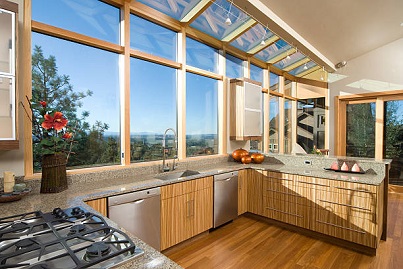
Well-known for its incredible toughness and durability, bamboo is nevertheless a flooring option you have to be careful about when it comes to refurbishing your kitchen.
The thing is, even though bamboo boasts excellent durability properties, so to speak, it’s also true that this material, in particular, doesn’t fare well with moisture, and as you know – there’s plenty of moisture in the kitchen. What is also potentially quite tricky is the fact that parquet doesn’t do well against steam, either.
When exposed to steam for prolonged periods of time, bamboo can soften up and begin warping and twisting itself in weird shapes. So, if you don’t own a kitchen hood or some other means of extracting steam out of the room, you may want to look for some other flooring solution.
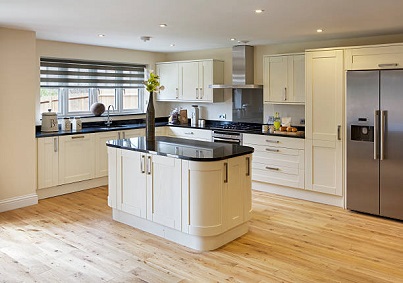
This may sound a bit counterintuitive, we know, but oak, as a flooring material, does not actually need to be all that expensive!
(Well, it depends on what sort of finishing quality you’re looking for.)
If you want high-end sort of oak, where the finest pieces of wood are used to make the flooring planks, sure, you’ll have to pay quite a price, but if you’d be willing to look into some of the secondary quality oak options, so to speak, you’d be surprised to see what you can find.
Namely, the less-than-perfect oak planks are often those that have knots in them, aren’t as good-looking, have burn stains, or other imperfections. You can get these at much lower prices, and then perhaps do some tweaking of your own. If you’re not willing to do it, you can just install them as they are – you’ll get a wonderful, rustic look, for sure!
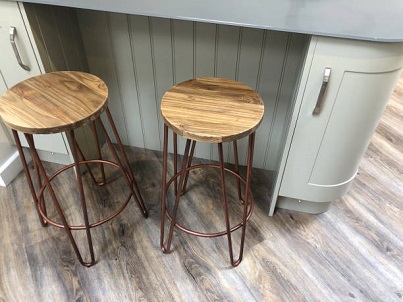
If you aren’t sure what you want to go with as your flooring choice, go for vinyl and you won’t make a mistake.
Well-known for its resilience to water and overall durability, vinyl is a sort of material that can survive years of use and abuse, without showing any signs of detriment. (Unless you’re really trying to destroy it, that is.)
The great thing about vinyl is that thanks to its smooth surface and artificial nature, so speak, you can make it look like pretty much any material you desire! Do you like natural wood? Vinyl can look like natural wood.
Fancy a ceramic tile floor but can’t really afford it? Get a vinyl that looks like ceramics, instead!
Add to all of this the fact that many manufacturers actually make their vinyl sheets, so that they can be easily installed with the self-adhesive bottom part, and you can see just how versatile and easy-to-use this material really is.
Plus, it’s dirt cheap! What’s not to love?
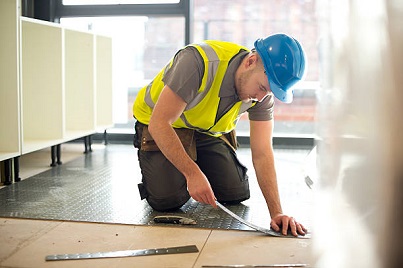
The first thing that springs to mind when you think of a rubber floor would be some swimming pool where folks walk about half naked and barefoot. And you wouldn’t be wrong, really.
Rubber is actually often used as a flooring material in industrial places with plenty of moisture, as rubber floors are easy to clean and are completely waterproof. Now, when it comes to residential areas, rubber hasn’t been the option up until quite recently. When installed in your bathroom or a kitchen, a rubber floor offers excellent durability and reliability properties and can last you for years before you’d need to fix it or replace it completely.
The good news is, even if you do end up being forced to replace the entire thing, the cost is so budget-friendly that it won’t really represent too much of a problem.
All things considered, whatever material you end up using for your kitchen as a flooring solution, as long as you are willing to invest some of your own effort for installation and go the extra mile, when it comes to looking for affordable deals with various flooring material vendors, you’ll be able to get the kitchen floor of your dreams and not pay massive amounts of money for it, either!
 |
 |
 |
 |

About Liz Gonzales
Liz lives in a suburb in New York city.
Both of her parents are the art professors at Sate University of New York.
As such, Liz grew up with all kinds of art objects, portraits, and books laying around the home.
Liz met up with Linea through another friend in some kind of online art forum. There great minds sparkled to take their passions onto the next level @ linea.io.
 |
 |
 |
 |
You can Get FREE Gifts. Furthermore, Free Items here. Disable Ad Blocker to receive them all.
Once done, hit anything below
 |
 |
 |
 |